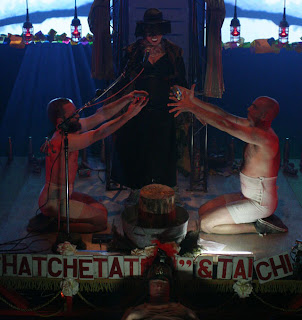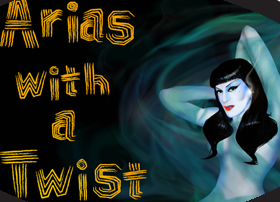If you are in the mood for dance this weekend, make your way to the Chen Dance Center at 7.30pm (Fri-Sat) for a real treat. The center, formerly the Mulberry St. Theater, curates newsteps: "a semi-annual dance series dedicated to providing support and performance opportunities for choreographers who are creating innovative and risk-taking works". Tonight and tomorrow, among the six performances that share the evening, there is a little gem: a duet performed by Makiko Tamura and Ryoji Sasamoto (both members of Ellis Wood Dance) entitled Order Made. Tamura, who choreographed the piece, was inspired by her grandmother's struggle with Parkinson's disease, as well as by photographs of the same grandmother in her lively youth. The result is a mesmerizing, poetic dance, an abstract and expressive ten minutes of precise gestural movement, intimate physical (mis)communication, and overall beautiful dancing. Tamura's choreography begins slowly, mechanically, and soon builds to a faster pace, exploring the many possible relations between the dancers on stage. Throughout the piece both performers maintain a puppet like quality that keeps their dancing unemotional, their eyes looking distant like those of wax sculptures - this is particularly powerful, as their dance does not demand empathy or sympathy, and develops out of what appears to be a strict necessity to move. Tamura and Sasamoto are wonderful dancers, at once powerful and contained in their energy, totally committed and present in their performance: it is a delight to see their work in the intimate space of the Chen Dance Center.
While Order Made is definitely the highlight of this newsteps series, other pieces in the evening deserve attention. Young choreographer Catherine Galasso's The Passion of A Hillbilly Greaser, for instance, is a fun dance theater piece that plays with the contrasts between the two performers: Brandt Adams and Yoko Mitsuishi. In an unexpected turn of events, we are serenaded by Mitsuishi's questionable karaoke skills, while being magically transformed into the audience of some kind of Japanese show. Galasso is particluarly skillfull in establishing an ominous mood, only to subvert it and shake the audience with uneasy humor. Galasso's piece stands out in the evening, rejecting the claim to "serious dance" that some of the other works attempt (like the somewhat overly dramatic and repetitive last piece entitled Unibody).
Choreographers' series like newsteps give you a chance to sample many different styles of work. Of course, it is also the case that pieces showcased at events like this one are not always...ripe. Overall, however, it is exciting to see that there are still dance spaces willing to make room for new, non-commercial, dance. Stepping into Chen Dance Center felt like entering a place from New York before the 1980's economic boom and the general commercialization of the arts. If you miss this series, keep your ears and eyes out for Tamura - I wouldn't be surprised to see her work showcased somewhere else soon.


















